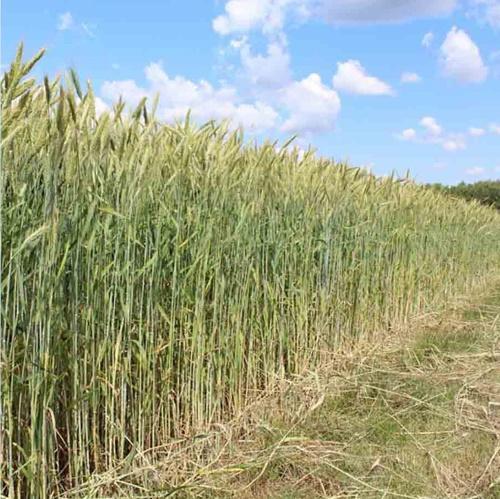Biological features of winter triticale - one of the best forage crops
 The biological characteristics of winter crops triticale put this plant in a special place among forage crops. Moreover, the high content of fat and protein in grains makes it possible to use them not only as animal feed. Flour for bakery products and cereals is also obtained from triticale. This is a rather undemanding crop to grow, which has an almost universal field of application.
The biological characteristics of winter crops triticale put this plant in a special place among forage crops. Moreover, the high content of fat and protein in grains makes it possible to use them not only as animal feed. Flour for bakery products and cereals is also obtained from triticale. This is a rather undemanding crop to grow, which has an almost universal field of application.
Winter crops triticale: biological characteristics and benefits of culture

Triticale compares favorably with other grain crops:
- The green aboveground part of the plant is more nutritious than that of wheat. Its introduction into the diet of animals accelerates their weight gain by more than 15%. In addition, the consumption of young juicy stems and leaves of triticale by cows and goats increases milk yield by 12%.
- Triticale grains contain more protein than wheat and rye.
- In terms of fat content, grains exceed rye and are practically equal to wheat, while having less alkylresorcinols (anti-nutritional substances).
Triticale is easier to digest than other grains. Adding it to compound feed can reduce feed consumption by up to 30% and increase animal growth.
Agrotechnics for growing triticale
 Winter hybrid prefers fertile drained peatlands and sod-podzolic loams. On heavy clay soil and in sand, the crop will not give a good harvest. The soil should have an acidity of 5.5.
Winter hybrid prefers fertile drained peatlands and sod-podzolic loams. On heavy clay soil and in sand, the crop will not give a good harvest. The soil should have an acidity of 5.5.
It is best to plant triticale after legumes, crucifers, buckwheat, potatoes, corn, oats, flax. Due to common diseases, it is impossible to sow winter crops after grain crops and perennial grains.
Compared with winter wheat, triticale has a higher frost resistance. Another advantage of the crop is its good resistance against diseases common among cereals. This significantly reduces the use of chemicals and allows you to grow more environmentally friendly products.